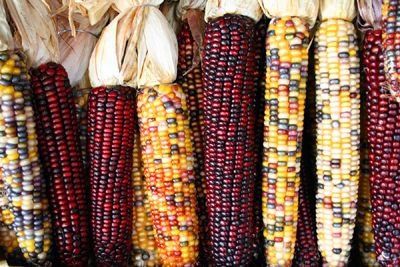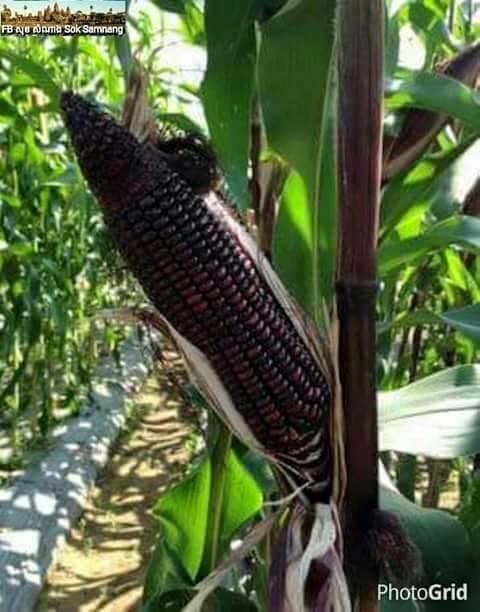
RNA molecules could help to reveal plant breeding in action hundreds of years ago.
Archaeologists interested in the genetics of ancient organisms have a new molecular tool at hand — RNA. Two teams of scientists have decoded RNA from ancient crops in the hope of understanding the subtle evolutionary changes that accompanied the process of plant domestication.
Unlike DNA, which remains largely unchanged throughout the life of an organism, RNA molecules offer a snapshot of the activity of a cell, indicating which genes are turned on and off, and to what extent.

"With ancient DNA you can see what an ancient organism might have looked like. With ancient RNA we can see what it actually looked like," says Sarah Fordyce, a molecular biologist at the University of Copenhagen, who presented the RNA transcriptomes (the whole set of RNA molecules present) of 700–850-year-old maize (corn) seeds at a conference there last week.
Ancient RNA is also a lot more likely to catch evolution in action than DNA, says Robin Allaby, an evolutionary geneticist at the University of Warwick, UK, whose team has sequenced small regulatory RNAs from ancient Egyptian barley seeds. Increasingly, biologists are discovering that the differences between organisms are due not to mutations that change the sequence of protein-coding genes, but to the genes' activity.
Important as RNA is to evolution, it isn't an obvious molecule to study in ancient specimens. RNA is notoriously difficult to work with because it is much less stable than DNA. Biologists working with fresh RNA struggle to prevent it breaking down, and extracting it from samples that are hundreds or even thousands of years old seemed pointless, Allaby says. "There was a strong ethos that even if there was any RNA around, it would be too degraded to do anything with."


Date with destiny
"I started doing it because nobody believed me," says Tom Gilbert, a geneticist at the University of Copenhagen who works with Fordyce. He got the idea to sequence ancient RNA after seeing a paper that described the germination of a 2,000-year-old date seed — a process that requires intact RNA1.
At the International Symposium on Biomolecular Archaeology in Copenhagen last week, Gilbert's team presented the first results of their efforts to coax RNA sequences from ancient maize samples from Chile and Arizona. The proof-of-principle study showed that both messenger RNA and ribosomal RNA are abundant in the maize kernels and that the mRNA sequences correspond to known genes.
To put the method to use, Gilbert plans to collect maize samples that span the plant's 6,000-year history as a domesticated crop from across the Americas, and to examine how its transcriptome changed in human hands. "We want to get into the psyche of early breeders," he says.
Terry Brown, a plant geneticist at the University of Manchester, UK, who is collaborating on the project, says that ancient maize transcriptomes could help scientists determine how domestication influenced the nutritional content of these early crops.
"There is a question of how technically advanced these ancient people were. To what extent could they recognize that varieties have particular qualities?" says Brown. "If there is steady development in the quality of the grain, that suggests they understood what they were doing as farmers."

With the grain
After hearing about Gilbert's success in sequencing ancient RNA from maize, Allaby, Oliver Smith and their colleagues examined small regulatory RNA molecules in 500-year-old barley seeds from Egypt. Plant remains recovered along with the seeds showed that the seeds produced plants whose grains grow in rows of two, instead of the usual rows of six — an adaptation to dry conditions. The problem, says Allaby, is that the seeds also contain a gene mutation that normally produces six-row barley.
He hopes that small RNAs, which influence the translation of mRNA and epigenetic modification of genes, will explain this conundrum. His team next plans to compare these RNAs with those found in modern barley and to try to identify which transcripts and genes they target.
Greger Larson, a geneticist at Durham University, UK, who was not involved in either project, thinks that RNA molecules are the right place to look for the molecular changes that underlie domestication. "You've got such rapid, major change over absurdly short periods of time. Evolution does not favour coding [DNA] mutations for this sort of thing," he says.
 ADVERTISEMENT
ADVERTISEMENT
What's more, plant seeds are the ideal tissue in which to study ancient RNA because they represent early stages in the development of an organism, where evolutionary changes can have the most profound effect, he says.
But that fact means ancient RNA might not be very useful for studying ancient animals such as mammoths. "Because the bones of animals are formed well after [early] developmental processes occur, you are getting a very different picture than you will be getting with seeds," he says.
Ian Barnes, a geneticist at Royal Holloway, University of London, thinks ancient RNA analysis "has a lot of potential", but he still questions the molecule's hardiness. "The problem is going to be which samples have RNA survival. There's a good reason why we haven't done any work on it in the last 25 years."



